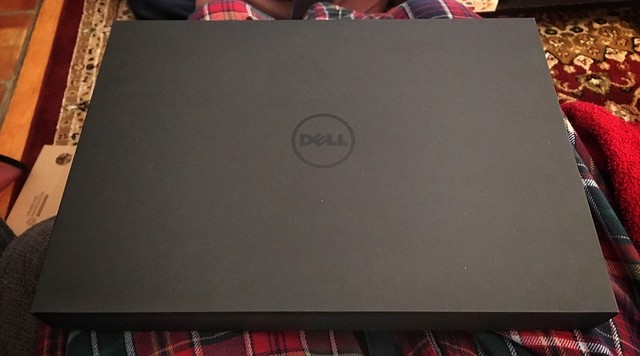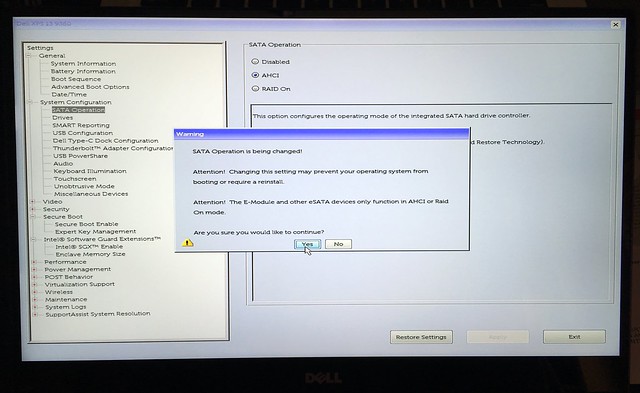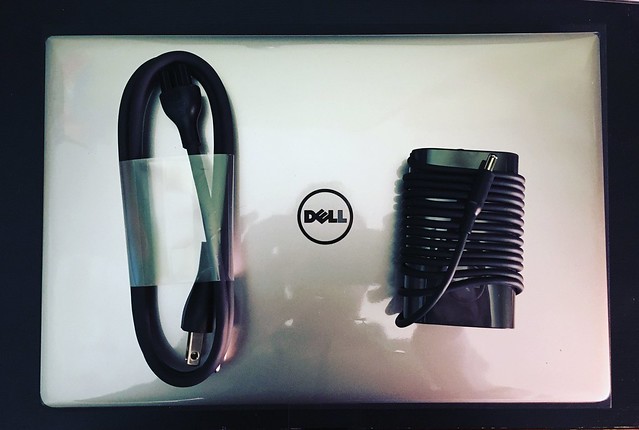Friday 10 March 2017
So, I got a Dell
By hub, Friday 10 March 2017 at 00:08 :: Gnome
Long. Overdue. Upgrade.
I bought a Dell XPS13 as my new portable workstation for Linux and GNOME. This is the model 9360 that is currently available as in a Developer Edition with Ubuntu 16.04 LTS (project Sputnik for those who follow). It satisifies all I was looking for in a laptop: lightweigh, small 13", 16 GB of RAM (at least), core i7 CPU (this is a Kaby Lake) and must run Linux well.
But I didn't buy the Developer Edition. Price-wise the Developer Edition is CAD$150 less than the Windows version in the "business" line and CAD$50 less than the Windows version in the "home" line (which only has that version). Exact same hardware. Last week, it was on sale, CAD$500 off the regular price, so it didn't matter. I got one. I had delayed so long for getting one, this was the opportunity for a bargain. I double checked, and unlike the previous Skylake based model that didn't have the same wifi card, this one is really the same thing.
I got a surprise door bell ring, from the delivery person (the website didn't tell me it was en route).
Unboxing

It came in a box that contain a cardboard wrap and a nice black box. The cardboard wrap contain the power brick and the AC cord. I'm genuinely surprised of the power adapter. It is small, smaller than what I'm used to. It is just odd that it doesn't come in the same box as the laptop (not a separate shipping box, just that it is boxes in a box, shipped to you at once). The nice black box only bear the Dell logo and contain the laptop, and two small booklets. One is for the warranty, the other is a getting started guide. Interestingly it mentions Ubuntu as well, which lead me to think that it is same for both preloads. This doesn't really matter in the end but it just show the level of refinement for a high-end laptop, which until the last Apple refresh, was still more expensive than the Apple equivalent.
Fiddling with the BIOS
It took me more time to download the Fedora live ISO and flash it to the USB stick than the actual setup of the machine, minus some fiddling. As I had booted, Fedora 25 was installed in 20 minutes. I did wipe the internal SSD, BTW.
Once I figured out it was F2 I had to press to get the BIOS upon boot, to set it to boot off the USB drive, I also had to configure the disk controller to AHCI instead of RAID, as without that the Fedora installed didn't find the internal storage. Note that this might be more troublesome if you want dual boot, but I didn't want. also I don't know what's the default setup in the Developer Edition either.

Nonetheless, the Fedora installer worked well with mostly defaults. HiDPI is managed, which that I finally have a laptop with "Retina Display".
Hands on
The laptop is small, with a HiDPI screen, a decent trackpad that works out of the box with two finger scrolling. An aluminium shell with a non glowing logo in he middle, a black inside with keyboard, and glass touch screen. The backlit keyboard has a row of function keys at the top, like it should be, row that dub as "media" button with the Fn key or actually without. Much like on a MacBook. The only difference that will require me to get used to is the Control key is actually in the corner. Like it used to be... (not sure if that's on all Dell though, but I remember hating not have control in the corner, then got used to to it like there was no option, and that was more than a decade ago). That will make for a finger reeducation, that's sure. The whole laptop a good size, it is very compact. Light but solid.
As for the connectivity, there is a SD card reader, 2 USB 3.0 port (A type) and a USB 3.1 Type-C that carries HDMI and Thunderbolt. For HDMI looks like a CAD$30 adapter, but it seems to be standard so might not be a huge problem.
Conclusion
I am happy with it. GNOME is beautiful in HiDPI, and it is all smooth.

